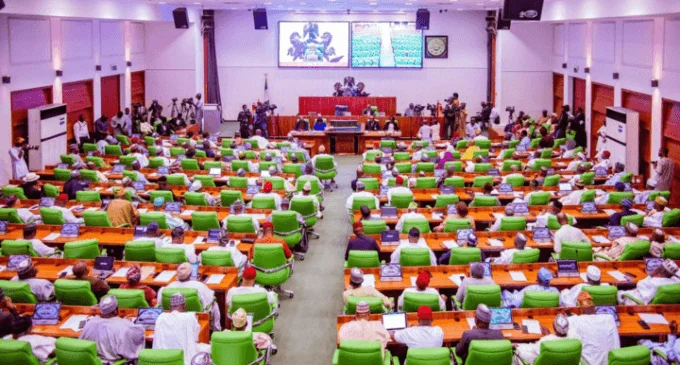Data centres drive our digital world—they power cloud services, store corporate and personal data, and ensure connectivity. Yet, they stand silently vulnerable as climate change escalates extreme weather events globally. A comprehensive new report by the Cross Dependency Initiative (XDI) reveals that nearly 9,000 data centres, both operational and planned, now face growing risk from flooding, fires, cyclones, coastal surges, and more.
Global Risk Assessment: Eight Hazards Measured
Reviewing each site under a high-emissions scenario (RCP 8.5), XDI’s analysis examines eight physical threats: riverine and surface flooding, coastal inundation, extreme heat, tropical cyclone winds, extreme synoptic winds, forest fires, soil subsidence, and freeze–thaw cycles . According to the report, about 6.25% of centres already fallen into “high-risk” today—projected to grow to 7.13% by 2050, with moderately at-risk sites rising from 15.79% to 19.6%.
Insurance Costs Could Triple or Quadruple
Worsening risks translate directly into skyrocketing costs. Without mitigation, insurance premiums could triple—or even quadruple—by mid-century. Already now, data centres classify under climate-risk insurance policies that burden operators, especially in emerging regions. Historical trends in insured losses—$165B in 2018 and $210B in 2020—further underscore that facilities belong to an asset class experiencing intensifying climate impacts.
Regional Hotspots: APAC and Major Hubs Exposed
The Asia-Pacific region leads both in growth and exposure. In 2025, over 10% of its data centres qualify as high risk, rising to more than 12% by 2050. Similarly, major hubs—New Jersey, Hamburg, Shanghai, Tokyo, Hong Kong, Moscow, Bangkok, and the Danish Capital Region—could see 20–64% of their facilities at high risk by 2050.
Even within the same city or campus, disaster exposure varies sharply due to differences in elevation, drainage, or proximity to hazard-prone zones. This spatial disparity highlights the need for granular, infrastructure-specific planning.
Structural Upgrades Yield Massive Gains
The report presents a novel quantification of how targeted structural interventions—site regrading, enhanced drainage, reinforced walls—can greatly reduce risk. These investments could save operators billions each year in both potential damage and insurance premiums.
Under modeled adaptation scenarios, implementing building resilience reduced high-risk data centre counts by over two-thirds across APAC and other regions—confirming the immense benefits of proactive upgrades.
Infrastructure Interdependencies Pose Hidden Vulnerabilities
However, structural upgrades alone won’t suffice. The report cautions that even the most hardened data centre is dependent on roads, power supply, cooling water systems, and telecom networks—all of which may be compromised by climate impacts. Ensuring resilience across these lifelines thus becomes a critical priority.
To that end, decarbonization and structural adaptation must proceed in tandem. Hardening alone cannot offset the consequences of unchecked global warming.
Sub‑Saharan Africa: Growth with Emerging Risk
Although Sub‑Saharan Africa currently shows lower physical risk than other regions, the report flags Nairobi and Lagos as high-growth sites likely to experience exponential increases in damage risk toward the century’s end. As data centre construction accelerates in those urban hubs, resilience planning must anticipate their unique climate vulnerabilities.
Context: Rising Stakes in a High‑Tech Era
Over the past decade, data centre capacity has ballooned to meet surging demands from AI, streaming, remote work, and 5G—dramatically increasing global footprint and exposure. Meanwhile, cooling infrastructure, designed under historical climate norms, now faces new stressors.
For instance, Wired reports that typical design thresholds assumed peak temperatures around 32 °C. As summers push past 40 °C, cooling systems must scale accordingly—raising building and operating costs. Rising energy demand for cooling drives carbon emissions higher, risking a feedback loop that makes resilience ever harder.
A Call to Action: Investors, Operators, Governments
Faced with these findings, XDI urges data centre stakeholders to:
-
Integrate precise climate-risk analytics into site selection and investment processes.
-
Implement structural resilience through site-specific upgrades and building deep resilience.
-
Strengthen supporting infrastructure, ensuring roads, power, water, and telecom can resist disruption.
-
Commit to emissions reduction, cutting long-term climate severity to preserve future viability.
-
Embrace insurance innovation, including climate-risk pooling and incentive structures for resilient builds.
By combining these actions, data centre ecosystems can shield themselves from compounding climate threats while controlling rising insurance premiums and downtime losses.
Conclusion: Digital Infrastructure on the Climate Frontline
In sum, XDI’s report delivers a stark warning: our digital backbone—nearly 9,000 data centres—is highly vulnerable to escalating climate-driven disasters. Already, a significant share of facilities faces danger soon, with costs set to balloon in the absence of proper mitigation.
Yet the path forward is clear. By integrating resilience into design, investing in infrastructure links, and reducing greenhouse emissions, operators, regulators, and financiers can ensure that vital data continues to flow safely—even as the climate changes.
Acting now means securing the future of digital services, safeguarding trillions in infrastructure value, and safeguarding global economic resilience.













